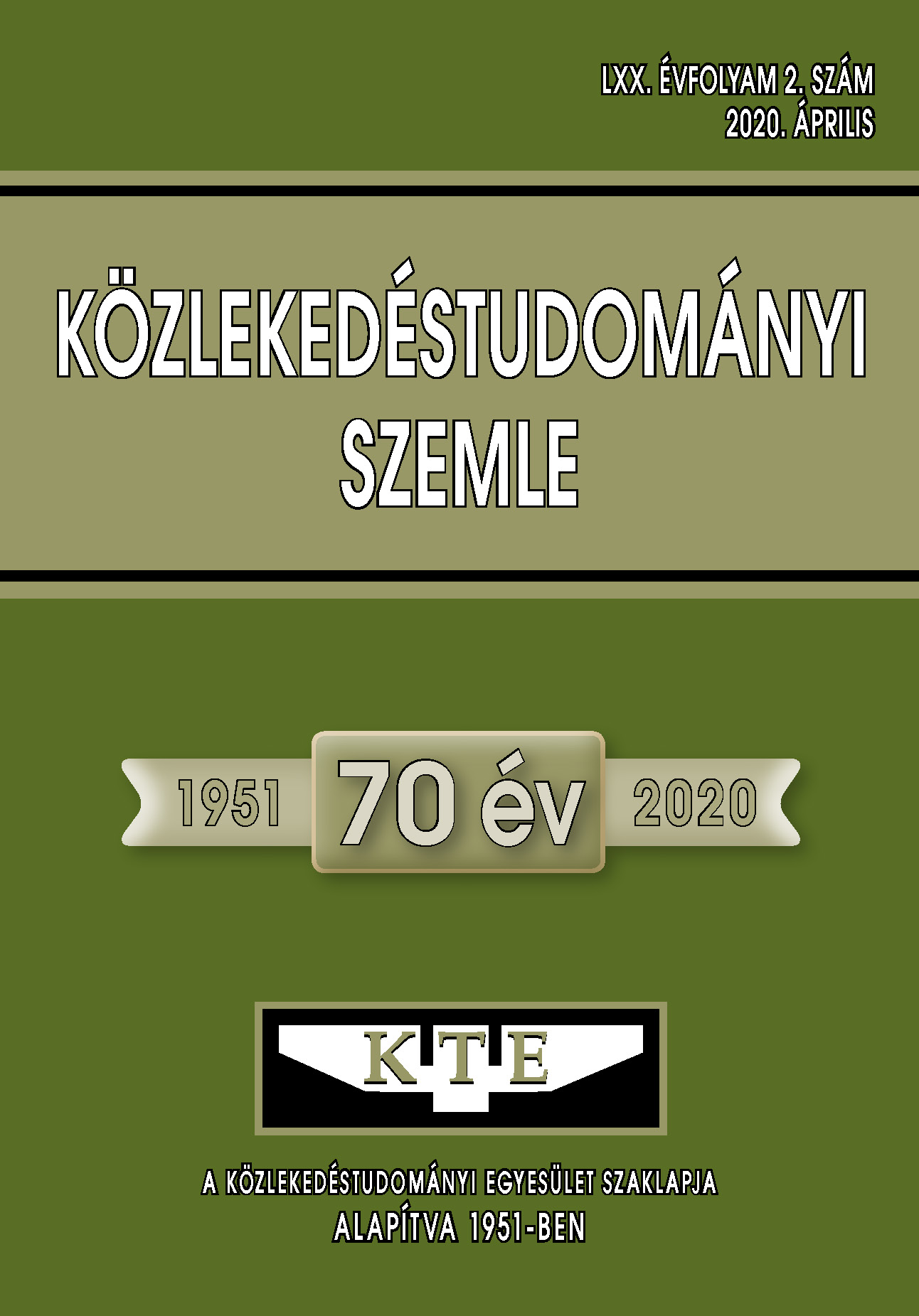Traffic analysis of highway sections using the average speed measurement method
Abstract
In this article, the authors investigate the introduction of average speed measurement. As far as we know, this study is unique in that it is the first domestic analysis based on significant amounts of real traffic data, collected over a longterm period – over several semesters. The focus of the investigations was the highway network, and in particular, two highways of high priority: M5 and M6, which had significantly different parameters in terms of traffic volume and seasonal restrictions in 2018.
References
Aarts, L. & Schagen, I. V. 2006. Driving speed and the risk of road crashes: A review. Accident Analysis and Prevention, 38, 215-224. DOI: http://doi.org/djq87b
Allsop, R.E., 1995. Reducing Traffic Injuries Resulting from Excess and Inappropriate Speed. European Transport Safety Council, Brussels.
Elvik, R.: The Power model of the relationsip between speed and road safety, TOI report 1034/2009, 2009
Fred Wegman, Charles Goldenbeld (2006). Speed management: enforcement and new technologies R-2006-5. Leidschendam, SWOV Institute for Road Safety Research, The Netherlands
Glendon, A.I., 2007. Driving violations observed: An Australian study. Ergonomics 50 (8), 1159–1182. DOI: http://doi.org/dfbkqk
Høye, Alena Katharina (2014). Evaluation of the crash effects of section control. Institute of Transport Economics Norwegian Centre for Transport Research 978-82-480-1547-5
https:// www.vezess.hu/magazin/2018/09/20/atlagsebesseg-meresrekeszul-a-rendorseg/
Jankó Domokos, Csenki László, Jákli Zoltán, Magyar Gábor 2004. Sebesség az M1 és az M7 autópályán. Közúti és Mélyépítési Szemle 2004. Vol. 54. Issue 10. PP 11-20.
Korthof, E.W. 2014. Effects of section control on traffic safety at Dutch motorways. Delft University of Technology. Netherlands http://resolver.tudelft.nl/uuid:261d7c62-a784-473c-98b6-85abe72ffd33
Központi Statisztikai Hivatal, adatszolgáltatás 2019.
Malenstein, J. 1998. Automated video speed enforcement and trajectory control, combined with fully automated processing. Intelligent Transport Systems; Towards the new horizon together. Seoul, Korea.
Montella, A., Persaud, B., D'Apuzzo, M., & Imbriani, L. (2012). Safety evaluation of automated section speed enforcement system. Transportation Research Record, (2281), pp. 16-25. DOI: http://doi.org/ddn7
Ragnøy, A. (2011).Automatic section speed control. Results of Evaluation. Norwegian Public Roads Administration, Directorate of Public Roads, Oslo.
Soole, D., Fleiter, J., Watson, B., 2012. Pointto-Point Speed Enforcement (AP-R415- 12). Austroads, Sydney.
Soole, D.W., Watson, B.C., & Fleiter, J.F. (2013). Effects of average speed enforcement on speed compliance and crashes: A review of the literature. Accident Analysis and Prevention, 54, 46-56. DOI: http://doi.org/ddn8
Stefan, C. (2006) Section control – automatic speed enforcement in the Kaisermühlen tunnel (Vienna, A22 Motorway). Austrian Road Safety Board (KvF), Vienna
Articles published electronically are open access (OJS), freely available online and can be downloaded. Authors of articles are not charged any publication or publishing costs (APC). Users have the right to read, download, copy, print, and search the articles, or share the full text with a link.
Authors must declare that their submission has not been previously published in another journal, that financial support has been acknowledged, and that the list of references is complete and accurate, including specification of URLs and DOIs (if available). When submitting a draft article, each author approves the submitted version. Authors guarantee that the article is their original work. Authors are required to participate in the peer review process, follow the advice of reviewers, meet the prescribed deadlines, and, if any, withdraw the submission or correct errors.
All submitted articles are subject to peer review, where the editors request an independent evaluation from at least one expert, ensuring that the reviewer(s) have no conflicts of interest with the authors. The final decision is made by the Editor-in-Chief, who takes into account the evaluations and the suggestions of the editors. The editors and reviewers treat the submission confidentially.
The publisher and editors are committed to maintaining high ethical standards and to preventing publications that involve research misconduct. They follow the COPE guidelines on such ethical issues.
The authors retain copyright and grant the journal the right of first publication under the Creative Commons License (https://creativecommons.org/licenses/by-nc-nd/4.0), which allows others to share the work, while acknowledging the authorship of the work and the first publication in the journal.
The journal archives all published articles, and the journal's owner, the Hungarian Society of Transportation Sciences, will continue to operate the database even if the journal ceases to be published.















